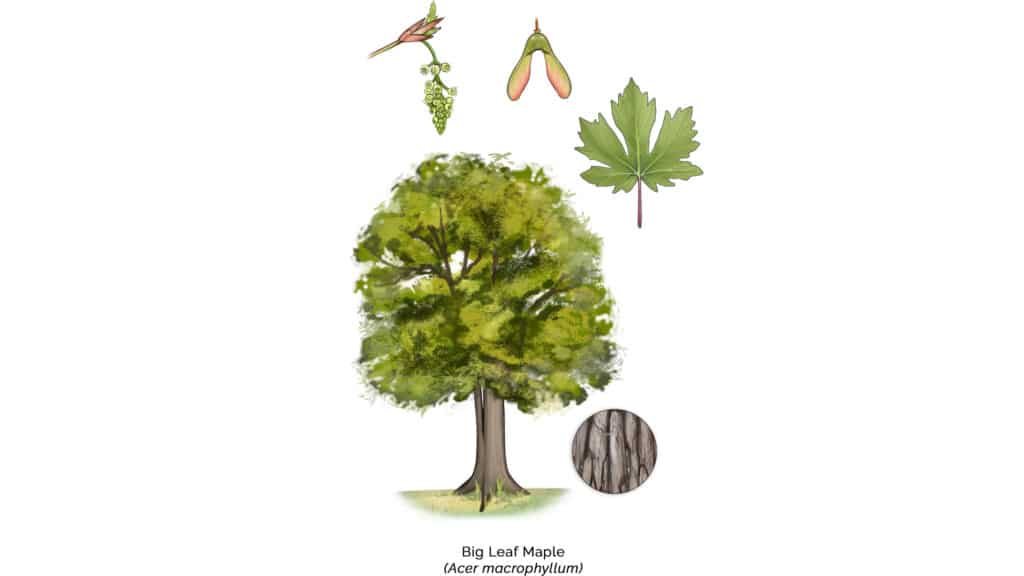Bigleaf maple (Acer macrophyllum) is a deciduous tree native to the Pacific Northwest, known for its massive, five-lobed leaves that can grow up to 12 inches across—the largest of any maple species. The tree typically reaches heights of 50–100 feet, with a broad, rounded crown and dark, ridged bark. It thrives in moist, well-drained soils and is commonly found in lowland forests, riparian areas, and along streams, from British Columbia to California. Bigleaf maple plays an important role in its ecosystem, supporting epiphytic mosses and lichens while providing food and habitat for wildlife. Its wood is prized for furniture, musical instruments, and decorative veneers, and its sap can be used to produce a unique Pacific Coast maple syrup.

